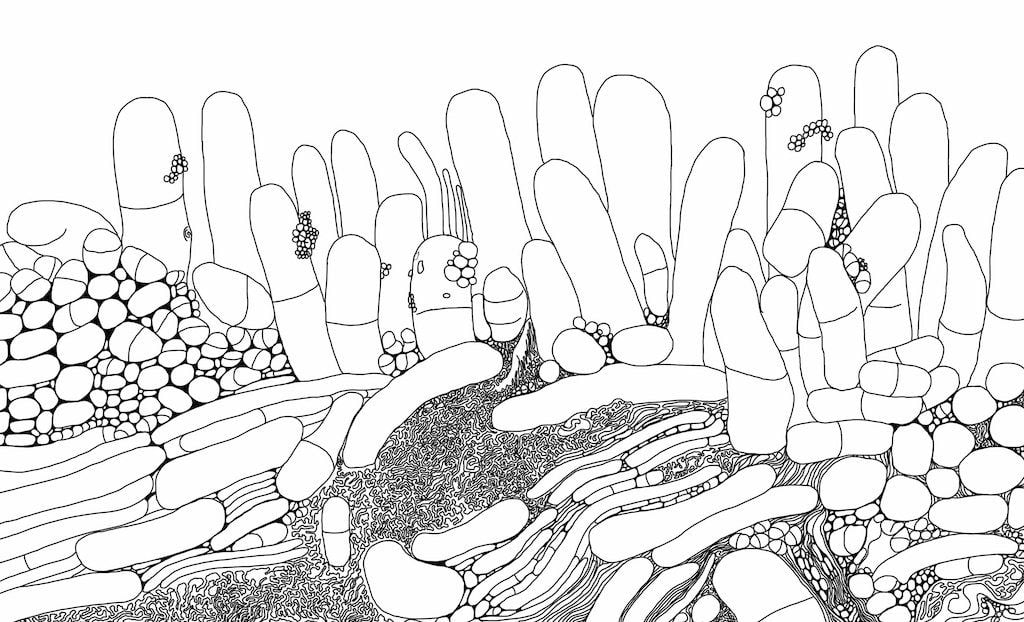[ad_1]
Desk of Contents[Hide][Show]
A brand new examine, performed by a crew on the College of Buffalo, experiences {that a} bacterium known as Veillonella parvula performs a supporting function in inflicting gum illnesses by inducing the multiplication of the pathogen Porphyromonas gingivalis.
The intention of the examine, printed in The ISME Journal, was to know the methods by which P. gingivalis types colonies contained in the mouth.
The query was how this pathogen might populate with out progress molecules. The researchers came upon that it obtained progress molecules from V. parvula, a standard bacterium of our oral microbiome.
The presence of V. parvula alone shouldn’t be dangerous. It’s their proliferation, which happens in a mouth with poor hygiene, that kickstarts the replication of P. gingivalis.
Highlights of The Research
The researchers on the UB Faculty of Dental Medication investigated P. gingivalis for round twenty years. The examine might be summarised as follows:
- The examine was performed on a pertinent mouse mannequin and in vitro tradition techniques and was targeted on understanding how the expansion molecules managed the expansion and colonization of P. gingivalis.
- 5 bacterial species which might be prevalent throughout gum illness had been chosen and the interplay between the expansion molecules of those micro organism with P. gingivalis was examined.
- Of the 5 varieties of micro organism, it was observed that solely the expansion molecules of V. parvula influenced the multiplication of P. gingivalis.
- One other attention-grabbing discovering was that P. gingivalis stopped multiplying when V. paravula was eradicated from the microbiome. Nevertheless, the presence of V. paravula was not sufficient because the replication of P. gingivalis was triggered solely when V. paravula existed in a big inhabitants.
- The examine instructed that P. gingivalis loved a unidirectional relationship with V. paravula because the sharing of progress molecules introduced no apparent benefit to the latter.
- Other than the expansion molecules, V. paravula types heme (blood) that served as a wonderful supply of iron for P. gingivalis.
- The unidirectional relationship was additional confirmed by a rise in periodontal bone loss brought on by P. gingivalis within the presence of V.paravula.
- It stays unclear if the growth-stimulating molecules produced by P. gingivalis are just like that of V.paravula and extra analysis is required.
Why This Issues
Over 47% of adults above 30 years of age have some type of gum illness, in line with the CDC.
Researchers might formulate particular therapies to handle periodontitis with the assistance of a deeper perception into the relation between V. parvula and P. gingivalis. Listed below are a couple of factors that the investigators got here up with:
- In an individual with good oral well being, P. gingivalis types a really small proportion of the microflora contained in the mouth and it can’t multiply.
- Alternatively, in people with poor oral hygiene and minimal plaque management, V. parvula multiplies at a fast fee and produces ample progress molecules that may set off the replication strategy of P. gingivalis.
Therapies that intention at eradicating V. parvula from the oral microflora can show helpful in maintaining gum illnesses at bay. Nevertheless, we must always keep in mind that their presence alone shouldn’t be dangerous. It’s their proliferation, which happens in a mouth with poor hygiene, that kickstarts the replication of P. gingivalis. Therefore, plaque management and upkeep of excellent oral hygiene are actually the perfect methods of stopping and treating periodontal illness.
References
- Anilei Hoare, Hui Wang, Archana Meethil, Loreto Abusleme, Bo-Younger Hong, Niki M. Moutsopoulos, Philip D. Marsh, George Hajishengallis & Patricia I. Diaz (2020). The ISME Journal Multidisciplinary Journal of Microbial Ecology. A cross-species interplay with a symbiotic commensal allows cell-density-dependent progress and in vivo virulence of an oral pathogen. Full textual content: https://www.nature.com/articles/s41396-020-00865-y
[ad_2]
Source link

